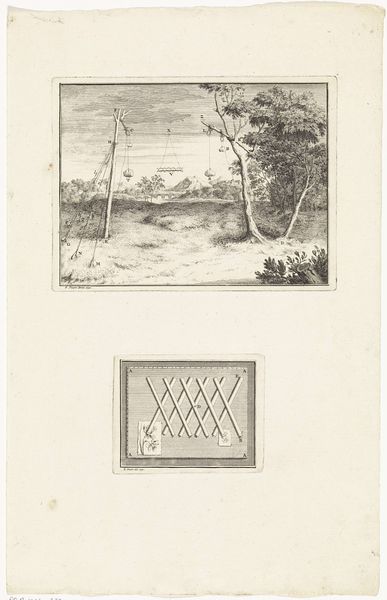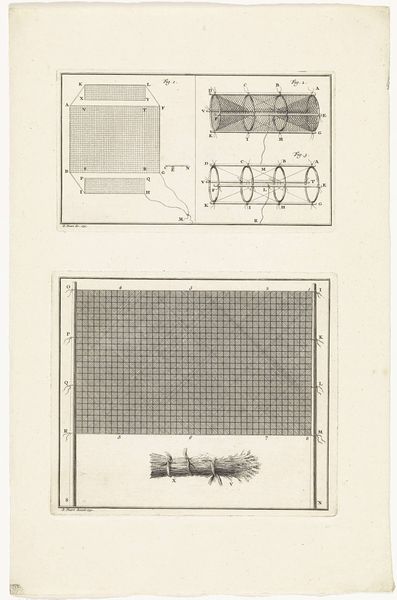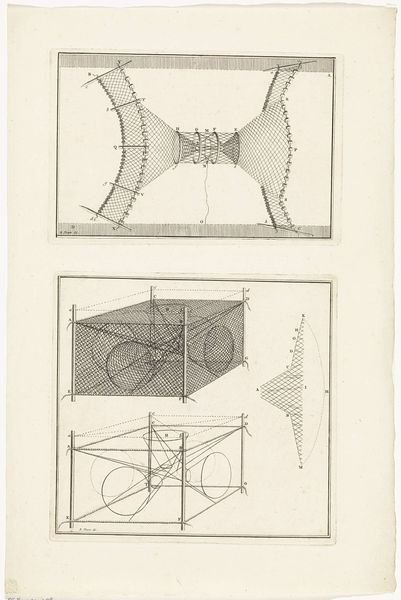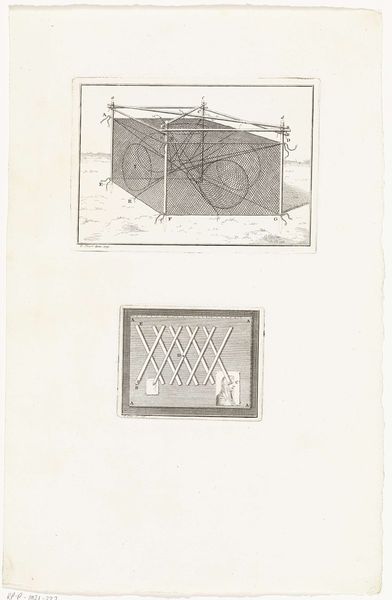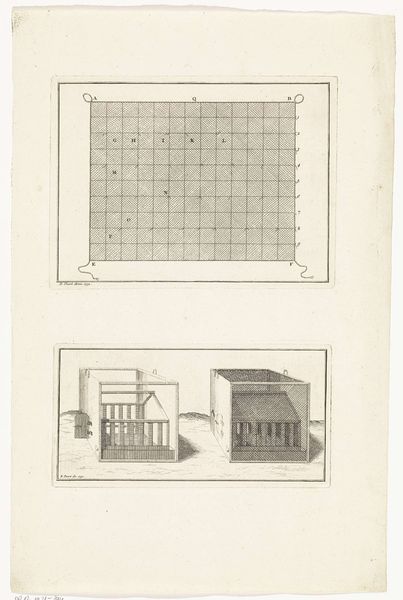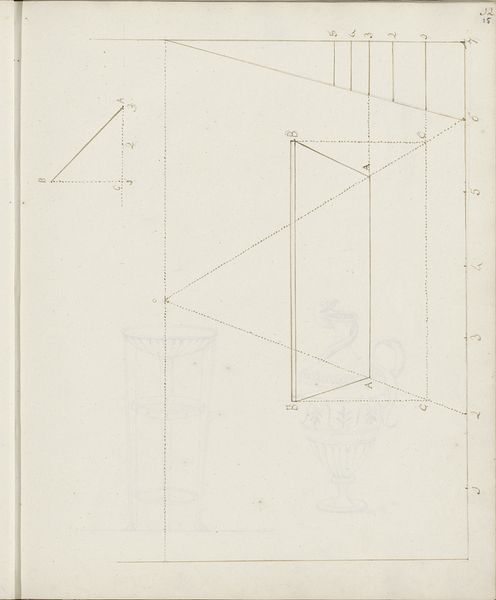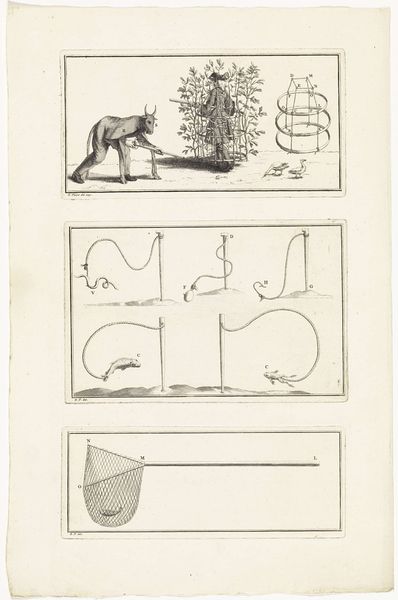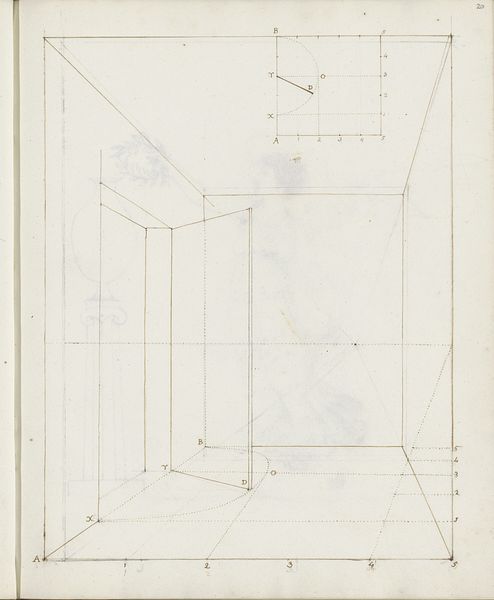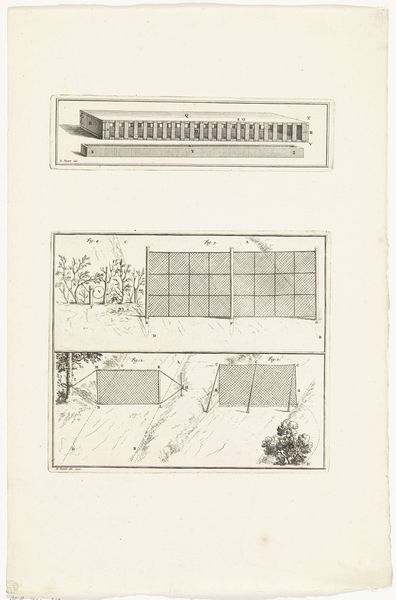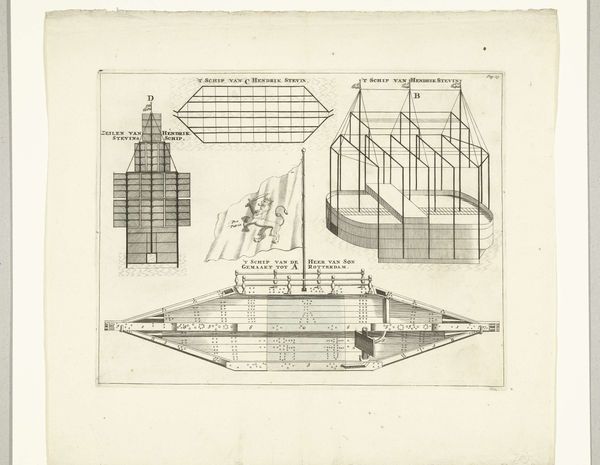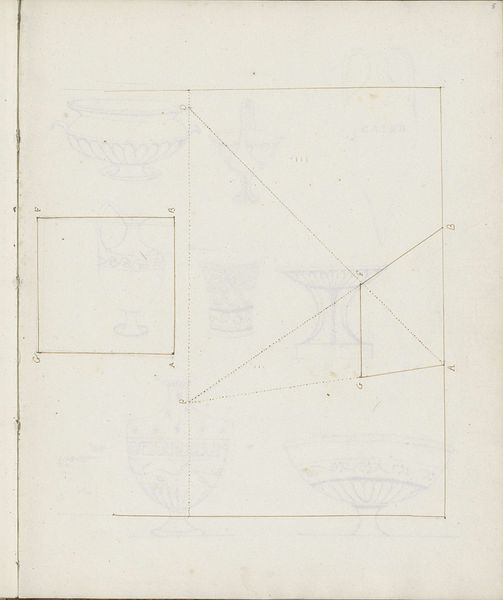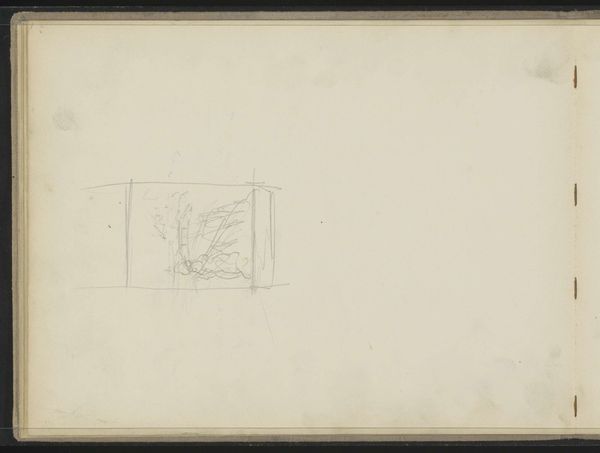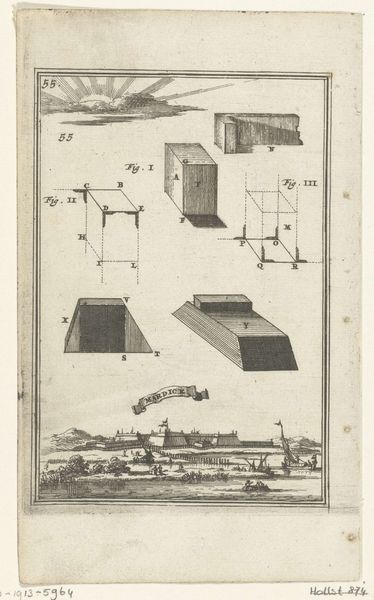
drawing, print, etching, engraving
#
drawing
#
baroque
# print
#
etching
#
landscape
#
etching
#
academic-art
#
engraving
Dimensions: height 142 mm, width 188 mm, height 72 mm, width 187 mm, height 383 mm, width 243 mm
Copyright: Rijks Museum: Open Domain
Curator: This delicate engraving by Bernard Picart, created around 1730, is called “Net tussen twee bomen en dierenval”, or "Net between two trees and animal trap" Editor: Immediately, I notice the contrast between the almost idyllic scene above, and the clear depiction of a tool designed for trapping below. It’s quite stark. Curator: Absolutely. Picart, working in the tradition of Baroque academic art, offers us a window into 18th-century attitudes toward nature and control. It also reflects back the inherent violence embedded in the social relationship with animals. Editor: Could you expand a bit on the context? It feels… didactic. Curator: Printmaking at the time served not only as art but as a medium for disseminating knowledge. Think about the encyclopedias emerging in this period. The meticulous rendering serves as an instructional image of how a trap mechanism functions within a perceived natural world, ripe to capture. Editor: I’m particularly struck by that grid in the top portion. It almost looks like a digital glitch inserted into this 18th-century landscape, but knowing the name it definitely represents the first, transparent "net". Does its size suggest that it captures everything within its scope, maybe even nature itself? Curator: Perhaps. We have to consider who gets to represent, classify, and trap, in this historical context. Power relations become enmeshed in the art-making itself. How might people, such as women, and animals also be ‘captured' in this grid of categorizing in 1730s? Editor: I never thought about it that way, I'm so fixed to animals, nature. Your point opens another reading... Picart's work then also serves as a reminder to reflect on power and representation itself, rather than the relationship with the land itself. Curator: Indeed, art so often carries hidden cultural agendas.
Comments
No comments
Be the first to comment and join the conversation on the ultimate creative platform.
